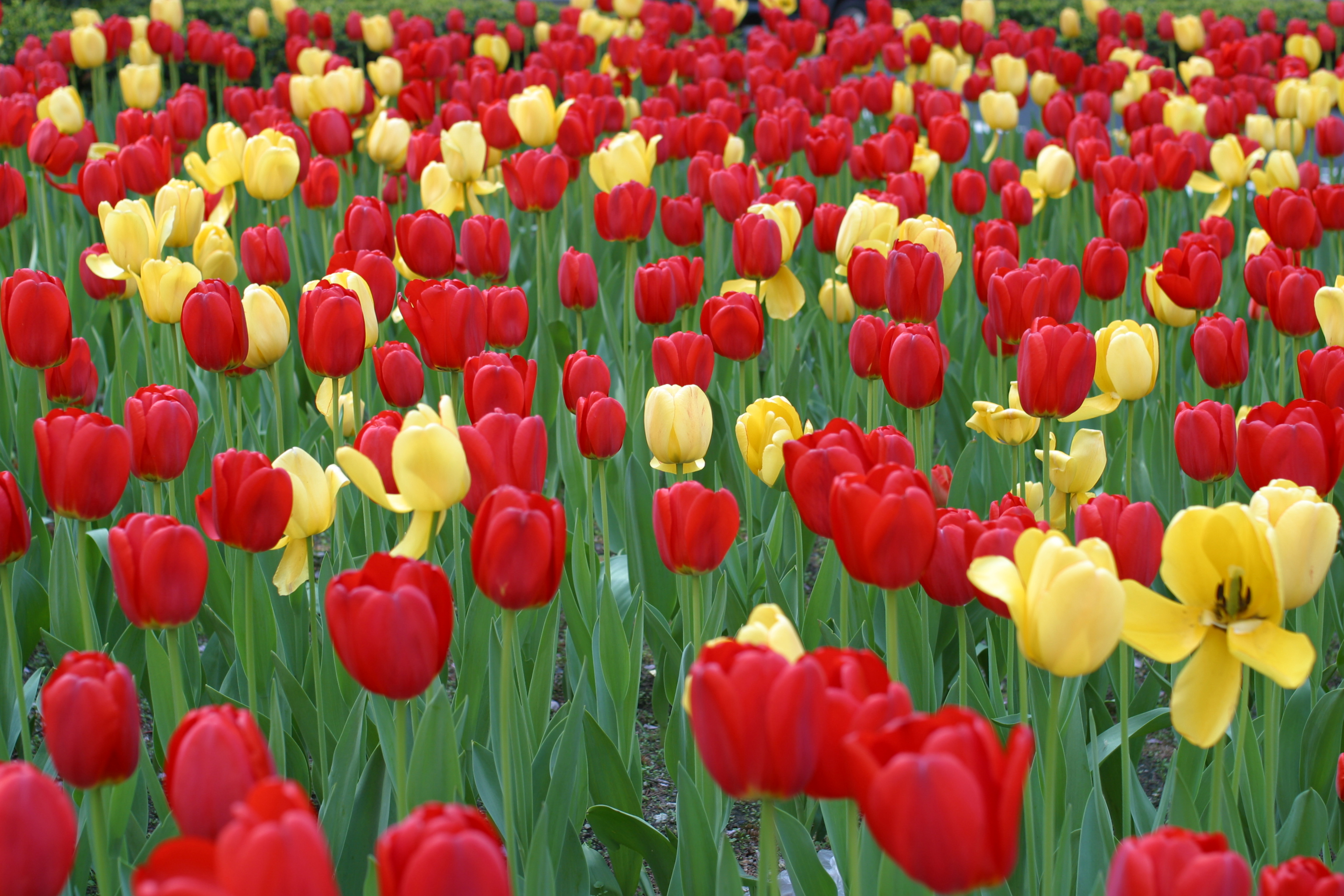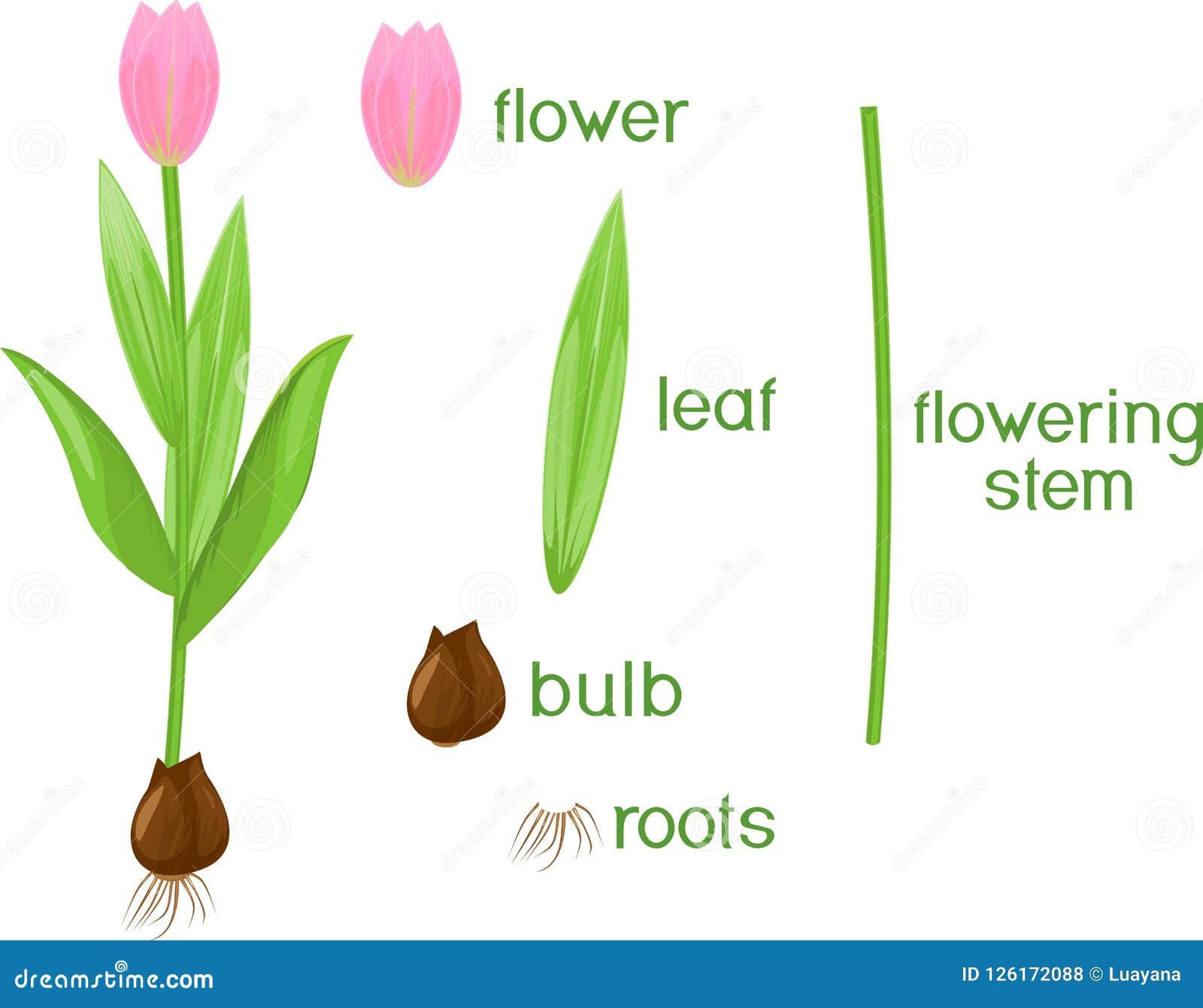Parts of a tulip plant – Embark on a botanical journey as we delve into the captivating world of tulip plants. From the vibrant petals that grace their blooms to the intricate inner workings of their bulbs, every part of a tulip holds a story waiting to be told.
Their alluring flowers, consisting of petals, sepals, stamens, and pistil, play a vital role in attracting pollinators and ensuring the plant’s reproductive success. Meanwhile, the bulb, with its basal plate, tunic, scales, and embryo, serves as a remarkable storage organ, nurturing the plant’s growth and development.
Flower Structure

The tulip flower is a beautiful and complex structure, composed of several distinct parts that work together to facilitate reproduction and attract pollinators. Understanding the different parts of the flower and their functions is essential for appreciating the intricate design and biology of this popular spring bloom.
Petals
- The petals are the most visible part of the tulip flower and are responsible for attracting pollinators with their vibrant colors and patterns.
- Petals are modified leaves that form a protective layer around the inner reproductive organs of the flower.
- Tulip petals come in a wide range of colors, including red, yellow, orange, pink, purple, and white, and can be single-colored or multi-colored with stripes, speckles, or other markings.
Sepals
Sepals are leaf-like structures that form the outermost layer of the flower bud and protect the developing flower within.
- Sepals are typically green and less showy than the petals, but they play a crucial role in protecting the flower during its early stages of development.
- In some tulip varieties, the sepals may be colored or have decorative markings, adding to the overall aesthetic appeal of the flower.
Stamens, Parts of a tulip plant
- Stamens are the male reproductive organs of the tulip flower and are responsible for producing pollen.
- Each stamen consists of a slender filament topped by an anther, which contains the pollen grains.
- When the flower is mature, the anthers release pollen grains, which are carried by wind or insects to the pistil of another tulip flower, facilitating cross-pollination.
Pistil
- The pistil is the female reproductive organ of the tulip flower and is responsible for producing seeds.
- The pistil consists of a stigma, style, and ovary.
- The stigma is the receptive surface that receives pollen grains during pollination.
- The style is a slender tube that connects the stigma to the ovary.
- The ovary contains one or more ovules, which develop into seeds after fertilization.
Bulb Anatomy: Parts Of A Tulip Plant

The tulip bulb is a fascinating underground structure that serves as the storage organ and the source of the plant’s growth and development. It consists of several distinct parts, each playing a crucial role in the plant’s life cycle.
Basal Plate
The basal plate is the flat, circular base of the bulb. It is composed of a mass of fibrous roots that anchor the bulb in the soil and absorb water and nutrients. The basal plate also produces new roots as the plant grows.
Tunic
The tunic is a protective layer that surrounds the bulb. It is made up of thin, papery scales that overlap like shingles on a roof. The tunic helps to protect the bulb from physical damage, desiccation, and pests.
Scales
The scales are the fleshy, storage organs of the bulb. They are arranged in concentric layers around the basal plate. Each scale consists of a thick, fleshy inner layer and a thin, papery outer layer. The inner layer is packed with nutrients, primarily carbohydrates and proteins, which are used to fuel the plant’s growth and development. The outer layer protects the inner layer from damage.
Embryo
The embryo is a tiny plant that is located at the center of the bulb. It consists of a root, a shoot, and a few leaves. The embryo is surrounded by a protective layer of tissue called the coleoptile. When conditions are favorable, the embryo will germinate and grow into a new tulip plant.
| Part | Description |
|---|---|
| Basal Plate | Flat, circular base with fibrous roots |
| Tunic | Protective layer of overlapping scales |
| Scales | Fleshy, storage organs arranged in layers |
| Embryo | Tiny plant located at the center of the bulb |
Leaf and Stem Morphology

Tulip leaves are long, narrow, and sword-shaped, with a pointed tip. They are arranged in a basal rosette, meaning they grow from the base of the plant. The leaves are typically dark green in color, but some varieties may have variegated or striped leaves.
The leaves are responsible for photosynthesis, the process by which plants convert sunlight into energy. The leaves also transport water and nutrients from the roots to the rest of the plant.
Tulip Stem
The tulip stem is long and slender, with a smooth, waxy surface. It is hollow, with a central cavity that runs the length of the stem. The stem is divided into nodes and internodes. Nodes are the points where leaves are attached to the stem, while internodes are the sections of the stem between the nodes.
The stem contains vascular bundles, which are responsible for transporting water, nutrients, and hormones throughout the plant. The vascular bundles are arranged in a ring around the central cavity of the stem.
